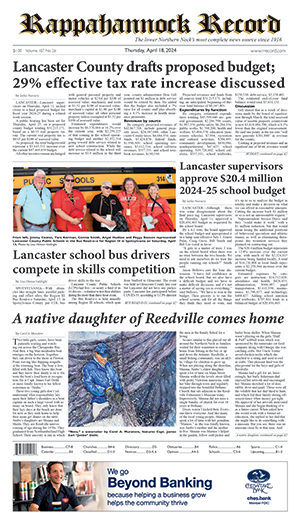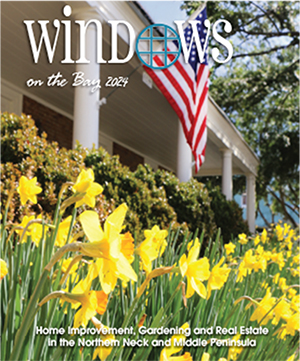Welcome Summer
Years long spent, we were weekend and summer folks (at the former Cowshed, Millenbeck).
As a lad, coming to the river with my parents, Memorial Day was our first cookout time. Charred burgers and crisp-skinned hotdogs were washed down with one’s favorite libation.
Inspired by the holiday conversation and shared memories of our parents we boys, with full tummies, would shoulder stick weapons and go off to the beaches of Lancaster to protect the holiday revelers from possible harm.
In 1866, Henry Welles (drugstore owner, Waterloo, New York) heard stories of Civil War soldiers coming home, some with missing limbs. All had stories to tell. He suggested that all the shops in town close for one day to honor the soldiers who were killed in the Civil War and were buried in the Waterloo cemetery. On the morning of May 5, the townspeople placed flowers, wreaths and crosses on the graves of the Northern soldiers in the cemetery.
Gen. Jonathan A. Logan also planned another ceremony for the soldiers who survived the war. He led the veterans through town to the cemetery to decorate their comrades’ graves with flags. It was not a happy celebration, but a memorial, called Decoration Day.
By 1868 the two ceremonies were joined and commemorated in most northern states on May 30. The southern states commemorated their war dead on different days. Children read poems and sang Civil War songs. Veterans came to school wearing their medals and uniforms to tell students about the Civil War. Then the veterans marched through their hometowns followed by the townspeople to the cemetery. They decorated graves and took photographs of soldiers next to American flags. Rifles were shot in the air as a salute to the northern soldiers who had given their lives to keep the U.S. together.
The name was changed (1882), to Memorial Day. Soldiers who had died in previous wars were honored as well, and it was designated a public holiday.
President Lyndon Johnson proclaimed Waterloo the birthplace of Memorial Day in 1966, 100 years after the first commemoration.
President Richard Nixon (1971) declared Memorial Day a federal holiday to be celebrated on the last Monday of each May.
Now Memorial Day is not limited as a day to honor only those Americans from the Armed Forces. It is also a day for personal remembrance. Families and individuals honor the memories of their loved ones who have died. Church services, visits to the cemetery, flowers on graves or even silent tribute mark the day with dignity and solemnity. It is a day of reflection.
However, to many Americans the day also signals the beginning of summer with a three-day weekend to spend at the shore, in the mountains or at home relaxing.
Perhaps our most notable American celebration will be at Arlington, the nation’s largest national cemetery across the Potomac River from Washington, D.C., in whose 624 acres the dead of our nation’s conflicts have been buried, beginning with the Civil War, as well as reinterred dead from earlier wars. It is controlled and maintained by the U.S. Department of Defense.
Our National Cemetery was established during the Civil War on the grounds of Arlington House, which had been the estate of Confederate Gen. Robert E. Lee’s wife Mary Anna Custis Lee, great-granddaughter of Martha Washington.
Members of our armed forces are buried there along with astronauts, explorers and other distinguished Americans and also 55 foreign nationals. On another hill there is a mass grave of unidentified soldiers from the Civil War. Our 35th President John F. Kennedy (1917-1963) is buried in a spot overlooking Washington, D.C. Here in the early hours of Friday morning soldiers walk along the rows of headstones. Each soldier will stop at a headstone, reach into a bundle of flags he is carrying, pull one out and push it into the ground.
In the Tomb of the Unknown Soldier, soldiers of the two World Wars, the Korean conflict and the Vietnam War are perpetually honored. The remains of each soldier represent all of those who gave their lives in war. Soldiers from the Army’s Third Infantry, Company E of The Old Guard, guard the tomb 24 hours a day. The Tomb Guard marches 21 steps down the black mat behind the Tomb, turns, faces east for 21 seconds, turns and faces north for 21 seconds, then takes 21 steps down the mat and repeats the process. After the turn, the sentinel executes a sharp “shoulder-arms” movement to place the weapon on the shoulder closest to the visitors to signify that the sentinel stands between the Tomb and any possible threat. Twenty-one was chosen because it symbolizes the highest military honor that can be bestowed—the 21-gun salute.
“The tomb is a white marble sarcophagus with a flat-faced form, relieved at the corners and along the sides by neoclassical columns. Sculptured into the east panel (facing our Nation’s capitol) are three Greek figures representing Peace, Victory and Valor.” The inscription reads: “Here rests in honored glory an American Soldier known but to God. ”
Next Monday please pause to pray and offer thanks to God for our Nation and the lives lost to secure our freedom. Thanks to our Veterans groups similar honors will be paid across our Northern Neck as flags adorn church and public graves of America’s fallen.











